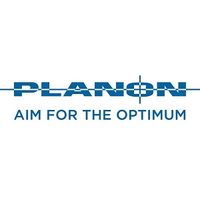How A Business Can Answer Today’s Vital Question: Reconfigure Or Reduce Office Space?

The impact of the coronavirus pandemic is starting to fade, and workers are preparing to return to the office. But it is unlikely that they will return to the same working practices or places as before. The benefits of working from home, for both employers and employees, have truly sunk in, creating what is being commonly termed the hybrid model — a combination of working in the office, from home and from other venues.
“The rhythm of the traditional workplace has broken up,” said Peter Ankerstjerne, chief strategy officer at real estate and facilities management software provider Planon and chairman of the board of the International Facility Management Association. “People can work at all times of the day, from wherever they are, and they are always connected. This has opened an array of opportunities for the workplace. We’ve been through 20 years of densifying the workplace. Now we’re seeing the flip side.”
With opportunities to change the workplace, however, will come a raft of new management challenges, Ankerstjerne said. As businesses work to understand what hybrid working means for them, they will need to create long-term real estate strategies while meeting the needs of employees. To get to any sort of right answer, technology is the key.
Insights Through Tech
A report created by Verdantix details five potential hybrid working models an occupier could adopt: a 60-40 split between the home and office; office-centric, with employees in the office at least four days a week; remote-centric, featuring mostly home working; split workforce, decided on a case-by-case basis; and decentralized hubs, in regional locations rather than a central headquarters.
A business’s decision about which model to implement depends on several factors, including the financial implications of each model and, particularly, what staff wants to do. Whichever model a business adopts, it is likely to complicate real estate and facilities management. The crucial challenge for a business is to ensure health and safety while creating freedom of choice and the productive work environment that suits employees today.
This is where technology can help, Planon product marketer Richard Bellairs said. Planon’s Integrated Workplace Management Solution combines data collected from a whole range of sources, from sensors that track which desks are in use to calendar reservations that show when meeting rooms are being used.
“The big decision for businesses now is whether to reconfigure or reduce space,” he said. “Technology can help them understand their usage, which allows them to do two things: firstly, make decisions in the short term about their space, and secondly, to provide a friction-free experience for employees, allowing them to book and use space as they need to."

Planning For Today And Tomorrow
Starting with the strategic business decision, Ankerstjerne reported that Planon is seeing big demand for products that are data-driven. Businesses are seeking to base decisions on actual office usage, not just now but how space has been used in the past and how it will be used over the next few months as people return to the office.
“If you only have 40% of your workforce in, how do you design the office?” he said. “Is there an opportunity to reduce the space you have to free up capital currently tied up in bricks and mortar? Lots of organizations are in deep conversations about their portfolio of leases.”
Better insight into the use of space brings with it the potential to save money long-term by, for example, directing cleaners to only clean spaces that have been used and optimizing building controls based on actual usage. Importantly, for businesses that have opted for a hybrid model that gives more freedom of choice, a technology platform such as Planon’s Workplace Engagement App could give employees the ability to work in a way that best suits their own working patterns.
“Using our app, a worker can connect with the workplace each morning, see who else is there, where his or her team is sitting, choose where they want to sit,” Bellairs said. “They will know in advance that there is room available and choose space based on the temperature or noise level of each particular desk.”
This type of foresight about what to expect when you get to the office would have seemed space age not that long ago. Ankerstjerne said he believes that soon this will be the norm, however, and Planon is already researching the next swath of technological innovations that could improve people’s work lives. The company has opened an innovation lab where it tests new technology.
“We’re trying out lots of different sensor technologies — occupant sensors on desks, environment sensors and so on,” Bellairs said. “We’ve partnered with EY to look at proximity sensors for social distancing. People can be issued with a Bluetooth tag to carry around when they’re in the building, and the system can warn if people are too crowded at any point.”
Though measures to curb the coronavirus pandemic are lifting in many places, many people believe that measures such as the need to socially distance are here to stay for the foreseeable future. Ankerstjerne described this as “the new reality,” and Planon is keen to deliver the technology businesses need to manage it both now and in the future.
This article was produced in collaboration between Planon and Studio B. Bisnow news staff was not involved in the production of this content.
Studio B is Bisnow’s in-house content and design studio. To learn more about how Studio B can help your team, reach out to studio@bisnow.com.

